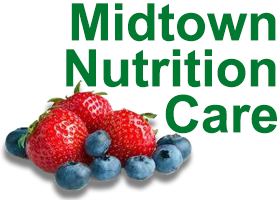PREBIOTICS AND PROBIOTICS
WHAT ARE PREBIOTICS?
Prebiotics are non-digestible carbohydrates that promote the growth of healthy bacteria in your intestines–think of them like food for probiotics.
WHAT FOODS HAVE PREBIOTICS?
Prebiotics include fructo-oligosaccharides (FOS), such as inulin (which is sometimes added to bread, pasta, and granola bars) and galacto-oligosaccharides (GOS). Prebiotics can be found in bananas, onions, garlic, leeks, asparagus, artichokes, soybeans, and whole-wheat foods.
WHAT ARE PROBIOTICS?
Probiotics are live microorganisms mostly bacteria–you can think of them as “good” bacteria. Many probiotics are the same or similar to the bacteria that are found naturally in your intestines.
WHAT ARE THE BENEFITS OF PROBIOTICS?
Probiotics may help with the treatment or prevention of certain types of diarrhea such as infectious diarrhea and antibiotic-associated diarrhea, ulcerative colitis, and with certain problems that happen with fat malabsorption. There is some evidence that it may improve immune function, dermatitis, decrease allergies, and help lessen symptoms of inflammatory bowel disease, irritable bowel syndrome, and lactose intolerance.
WHAT FOODS HAVE PROBIOTICS?
Probiotics can be found in yogurt (look for live active cultures symbol), cottage cheese, buttermilk, kefir, aged cheeses, miso, tempeh, and sauerkraut.
SHOULD I TAKE A PROBIOTIC SUPPLEMENT?
Over-the-counter supplements in the United States including probiotic supplements are not regulated. It is best to obtain probiotics from foods rather than supplements unless recommended by a doctor or registered dietitian. Remember when you take a probiotic supplement you are swallowing trillions of bacterial spores; although rare, there have been a few cases where it has led to an infection in people with weakened immune systems.
WHAT ARE SYNBIOTICS?
Synbiotics are products that combine prebiotics and probiotics. Eating a banana with yogurt or stir-frying asparagus with tempeh are both great ways to include pre and probiotics in a meal.
